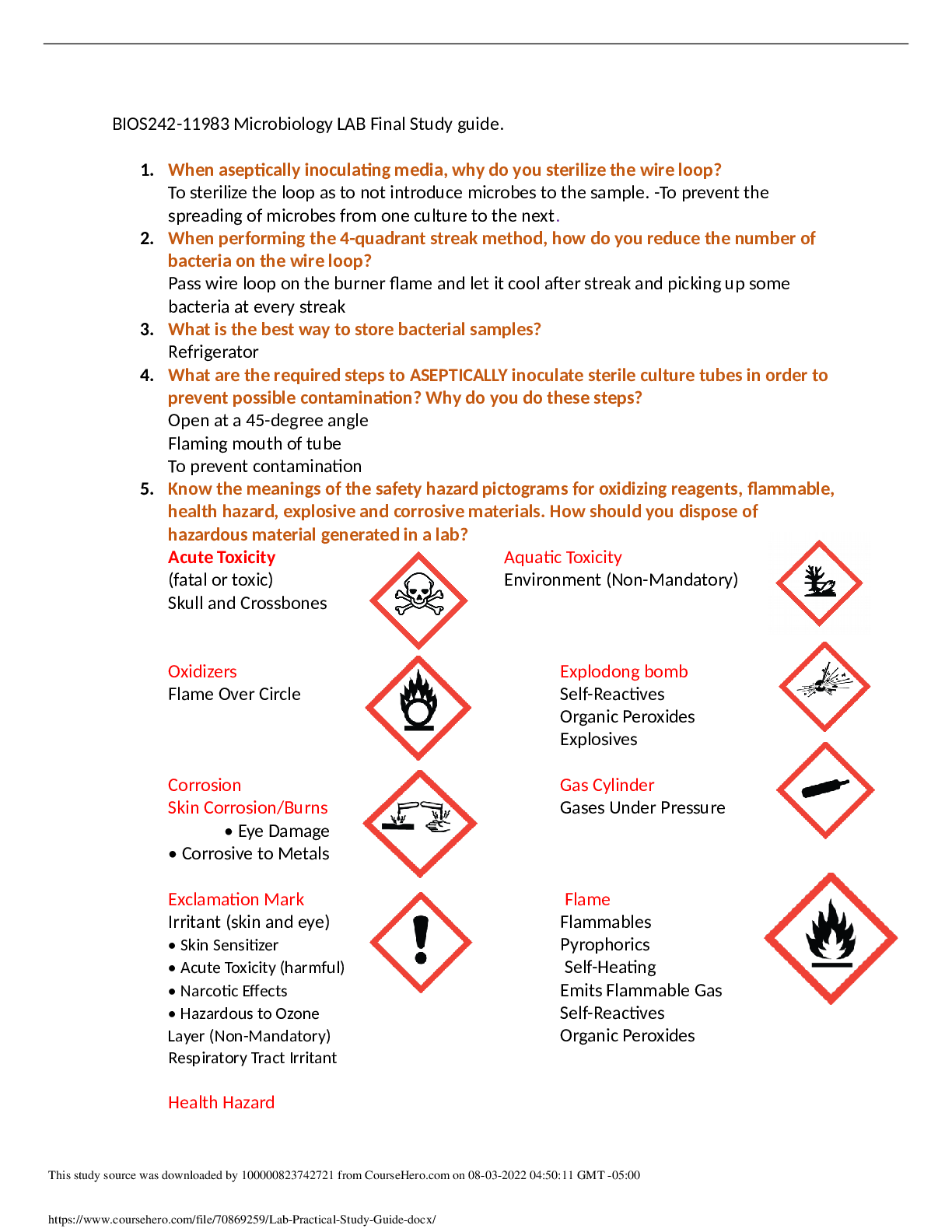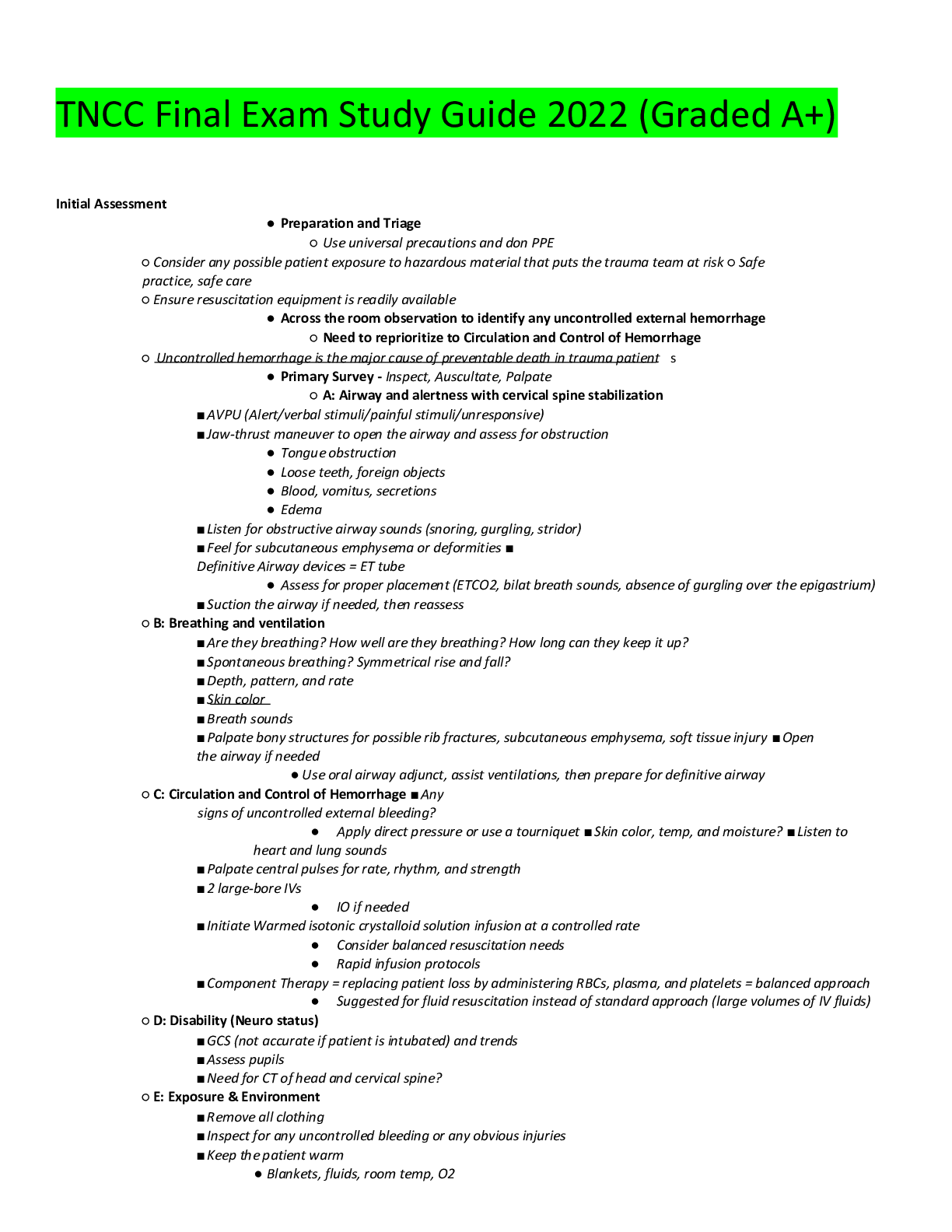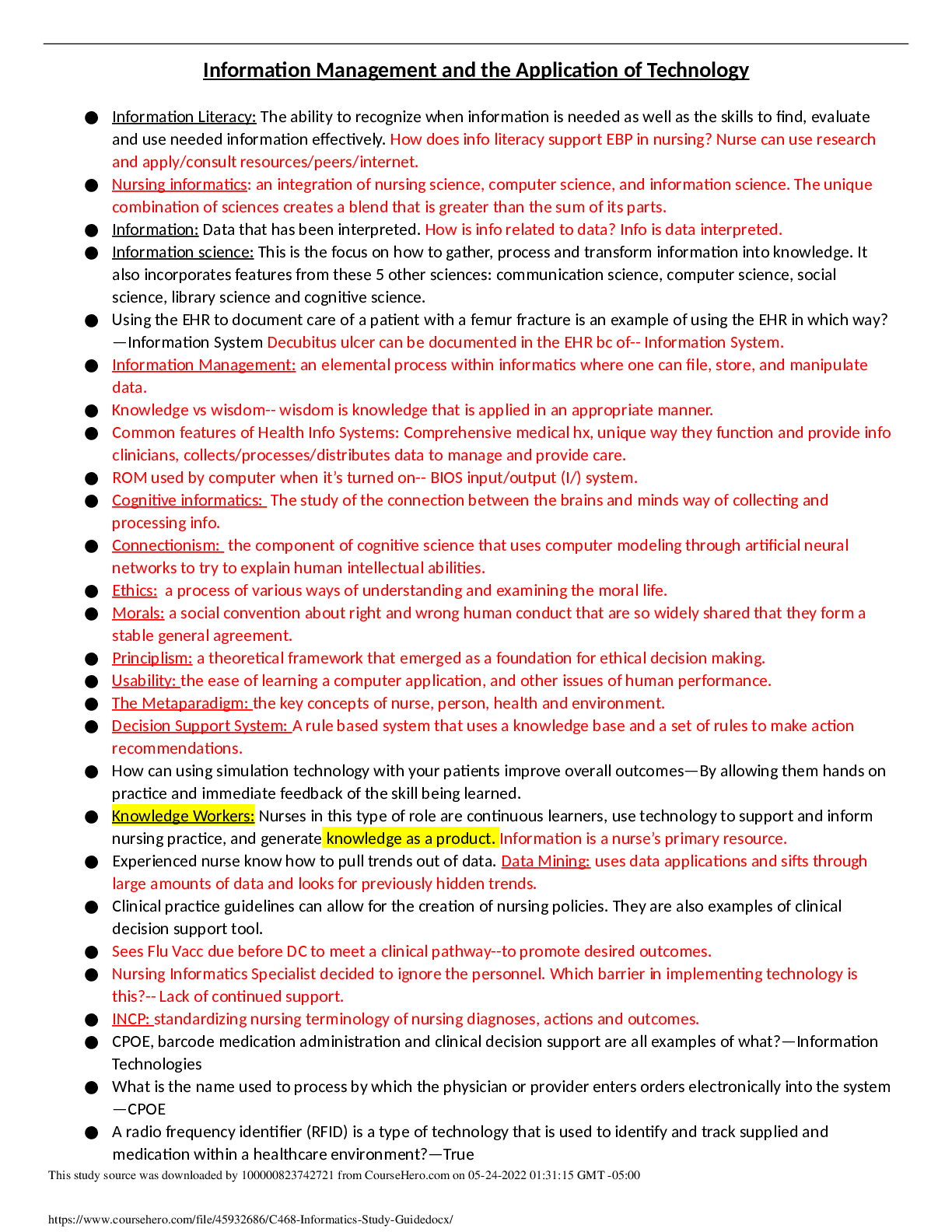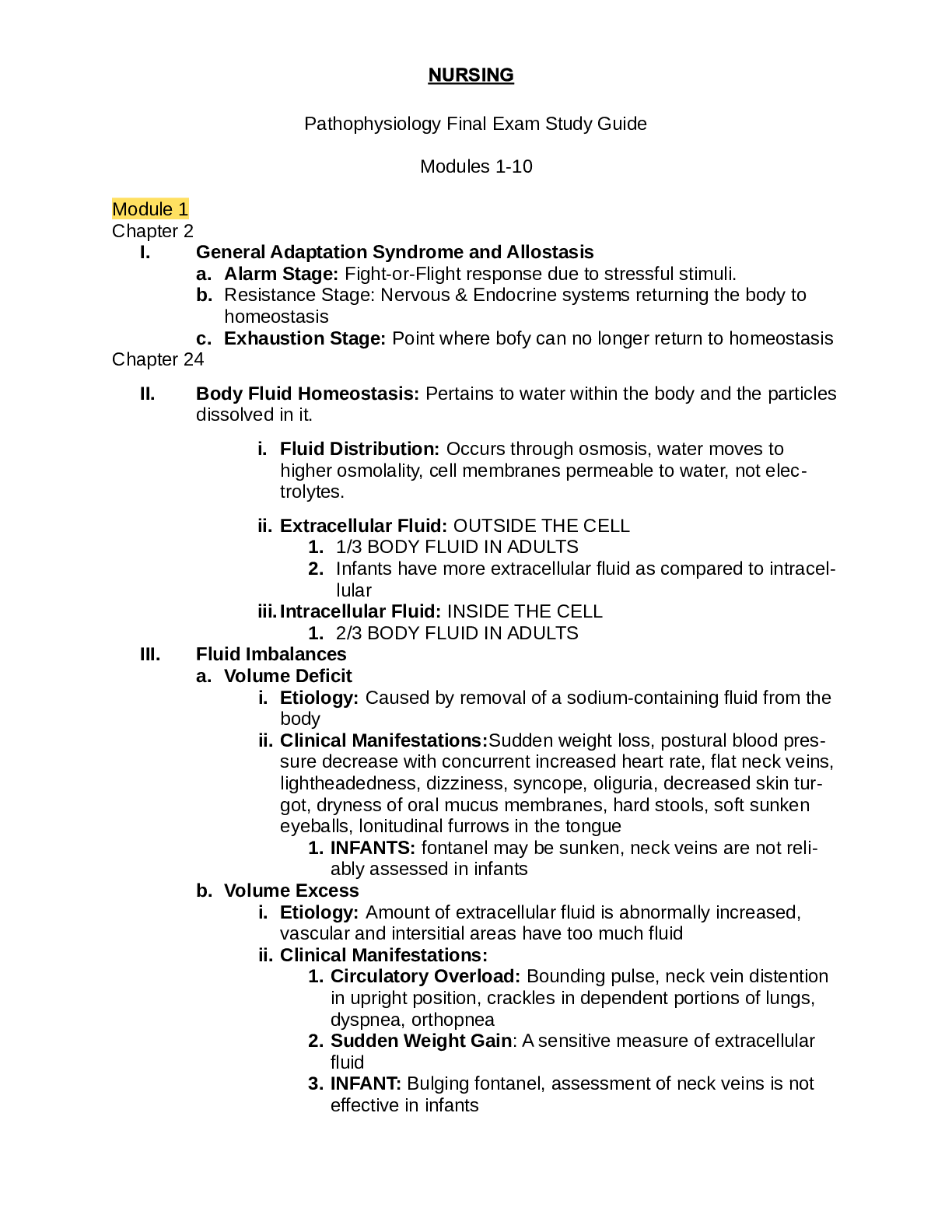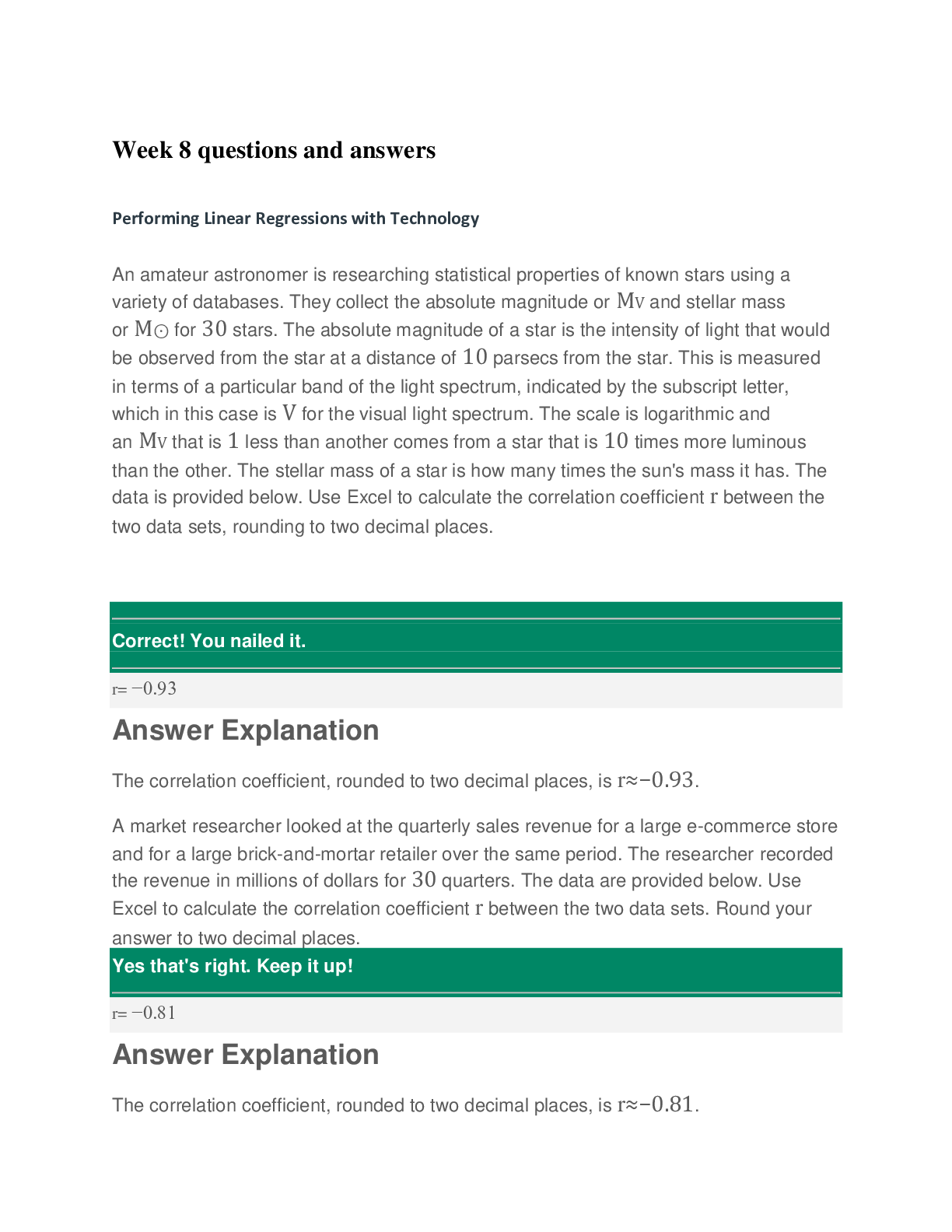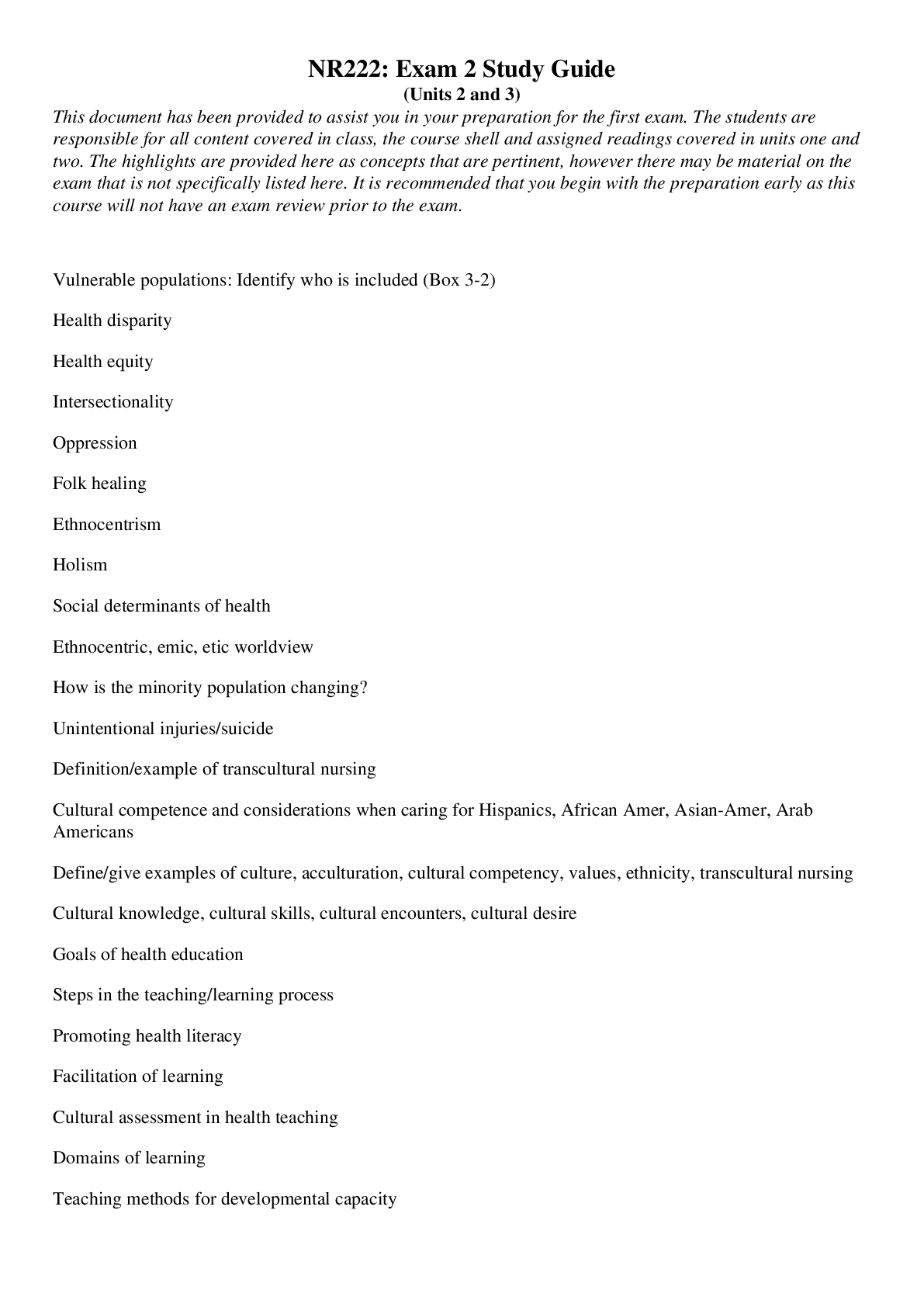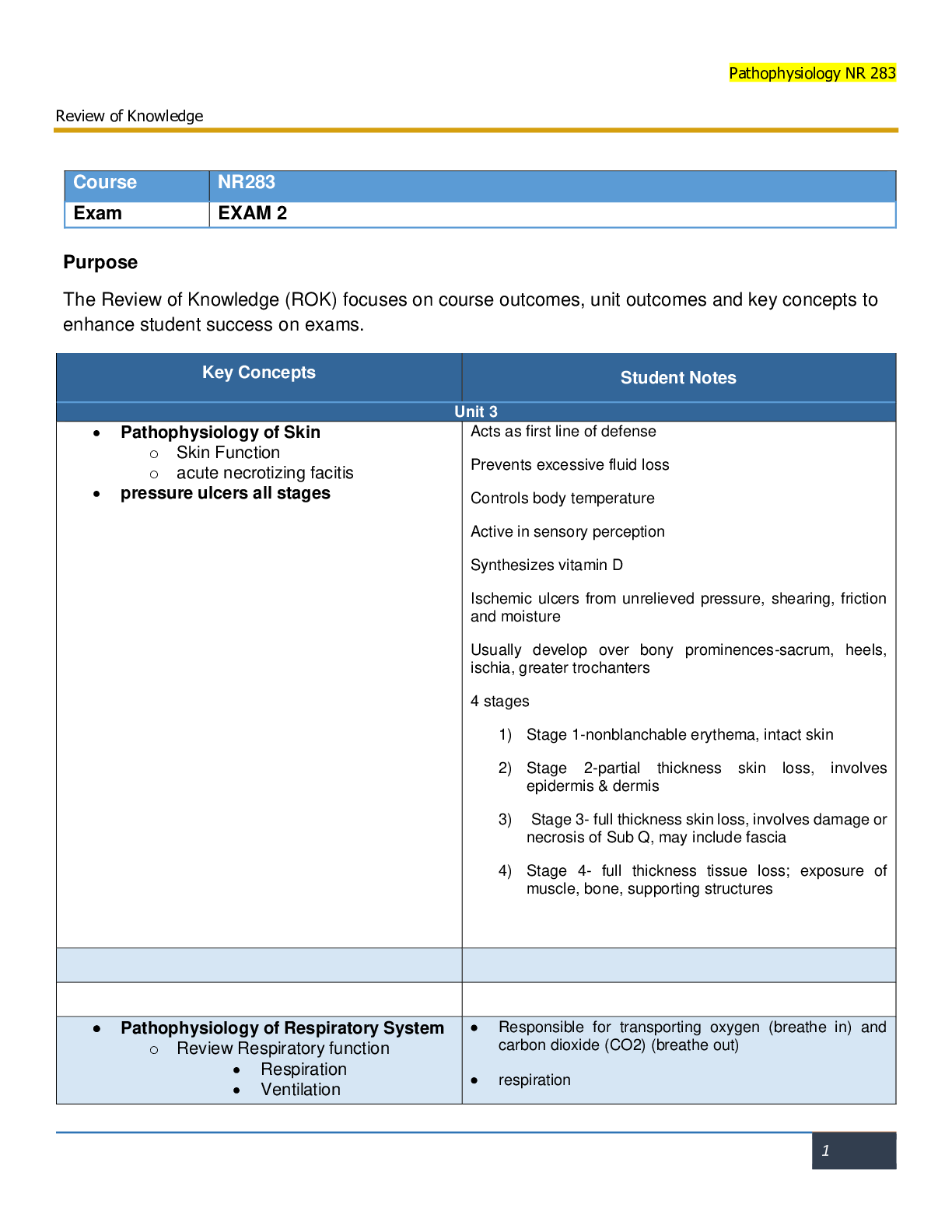Biology > STUDY GUIDE > Microbiology Midterm Study Guide Helpful Unhelpful Chamberlain College of Nursing (All)
Microbiology Midterm Study Guide Helpful Unhelpful Chamberlain College of Nursing
Document Content and Description Below
Microbiology Midterm Study Guide Covers Chapters 1-13 /Week 1 (Chapters 1-3) 1. Pasteur - Final disproof spontaneous generation 2. Hook- Saw first microbes 3. Lister -Aseptic techniques during sur... gery 4. Semmelweis - Dr. had to wash hands in maternity ward 5. Schultze & Schwann- Chemical treatment of air stops ability to produce life 6. Koch - Developed postulates for disease microbe connection 7. Redi - Maggot-meat experiment 8. Leeuwenhoek - Made first microscope Fundamental of cells: Unicellular (Bacteria, Archaea, Protozoa, some fungi) and multicellular organisms (animals and plants) All cells (prokaryotes + eukaryotes) have in common: Cell membrane DNA that holds genetic information Ribosomes for protein synthesis Cytoplasm Eukaryotes are more complex with DNA enclosed in nucleus and membrane enclosed organelles Bacterial shapes: Cocci Rods. Vibrio Spirillum Spirochete Branching Filaments 1 Microbiology Midterm Study Guide The 5 Is: Inoculation - Purposely moving something from 1 place to another. starts with specimen collection; lesion, draw blood, bird droppings, etc. - introducing a tiny sample into a medium to provide an env't where they multiply. Incubation - To hear bacteria to make it grow (usually body temp). maintaining something at the most favorable temperature for its development. 20 deg C & 40 deg. C02 may be required. - promotes multiplication of microbes over period of hours. - produces a culture Isolation - Separate from each other separation of a strain from a natural, mixed population of living microbes, spreading bacteria apart as far as possible. - isolated microbes takes the form of separate colonies on solid media or turbidity (free floating cells) on broth. Inspection - Doing tests on the bug appearance, cells, colony (red? shape, gram stain, sugar, etc.). Identification - determine type of microbe - specialized tests; biochemical test to determine metabolic activities specific to microbes - immunologic tests, genetic analysis. Microscopy Basics/ Types of microscopes: 1. Bright field microscope - Most widely used microscope image is darker than illuminated field made by putting light through specimen 2. Dark field microscope- similar to bright field image is lighter than illuminated field bright field microscope is changed to dark field microscope by adding a condenser to the light 3. Phase contrast microscope- used with live specimen produces image with specimen against gray background can see internal cells 4. Differential interreference microscope- produces colorful 3D image 2 prisms which add contrasting colors to image [Show More]
Last updated: 2 years ago
Preview 1 out of 30 pages

Buy this document to get the full access instantly
Instant Download Access after purchase
Buy NowInstant download
We Accept:

Reviews( 0 )
$10.00
Can't find what you want? Try our AI powered Search
Document information
Connected school, study & course
About the document
Uploaded On
Aug 03, 2022
Number of pages
30
Written in
Additional information
This document has been written for:
Uploaded
Aug 03, 2022
Downloads
0
Views
207



